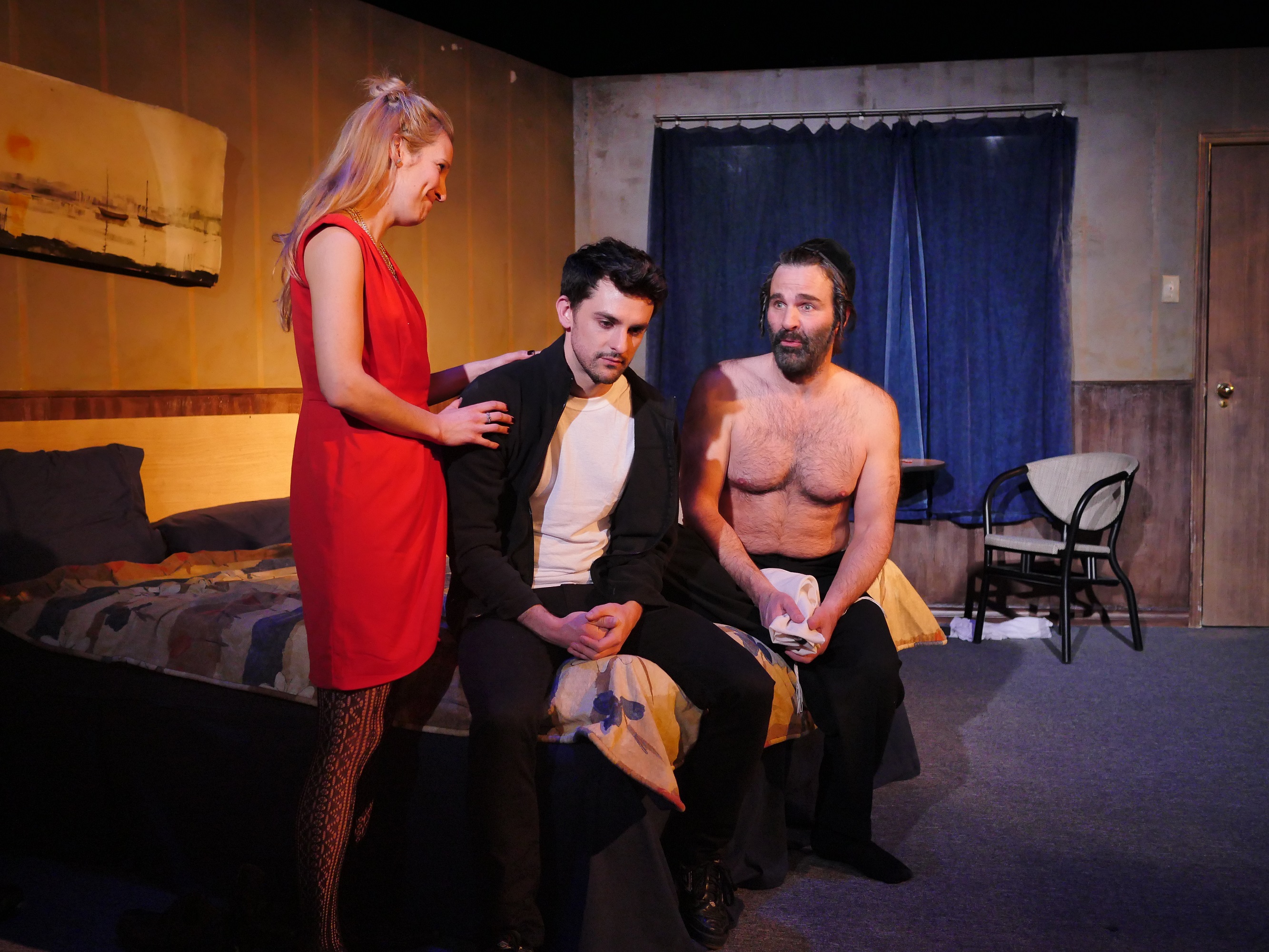Honesty Rents by The Hour, a play produced by Infinitheatre, is more than just a hook-up story
The play Honesty Rents by the Hour tells the story of three mismatched strangers who meet at a seedy motel in Montreal for an anonymous threesome. Danny, a student living in the McGill ghetto, is joined by two other carnal pleasure-seekers: Chantal, a wife and mother from St-Eustache, and Pinchas, a Hasidic Jew living in Outremont.
Produced by Infinitheatre and written by Michael Milech, Honesty Rents by the Hour is a provocative play about the complexity of human nature, relationships and identity.
“They all have comfortable lives that are filled with all the objective markers of happiness, but clearly something is missing. They want more and they have that in common with each other,” said Milech in a phone interview. “As much as they are from different backgrounds, they all have difficulty expressing their unfulfilled needs to their loved ones.”
Honesty Rents by the Hour tackles issues of sexual, religious and linguistic identities and their corresponding prejudices. According to Milech, the play raises questions about “who is our real self—the person that we show everyday, something we keep hidden, or is there any such thing as a real self?”
Faced with these difficult questions, the characters’ desire for a sexual encounter quickly starts to wane. They strike up a conversation that helps peel away inhibitions, revealing truths previously suppressed. Chantal is cheating on her husband, who she finds boring. Pinchas is still coming to terms with his bisexuality, and his parent’s reaction to it. Danny keeps a cool facade, which hides his lack of confidence. This proves to be liberating and encourages reflection on the reasons for keeping these secrets.
About his character Danny, actor Patrick Keeler said, “Danny questions things about himself that he is uncomfortable with, things that he hasn’t dealt with fully for a long time … He thinks he’s got everything figured out.”
“I think he has to come to terms with his own shortcomings and the fact that he is not as honest as he thought he was,” Keeler added.
Honesty Rents by the Hour was featured at the 2016 Montreal Fringe Festival, where it snagged an award for best text. This is Milech’s first professionally-produced play, and features a bigger set than when it premiered at the Fringe Festival.
“Last time, it might have felt a little lighter and a bit more on the side of comedy,” said Matt Jacobs, the play’s director. “There are still plenty of laughs, but now it’s got a real grounded feel and a realness that we were not able to reach before.”
The characters are well crafted, interesting and easy to relate to, as are the dilemmas they face. “I really think one of the reasons this play is so strong is that we, the audience, do not necessarily relate to the characters on the outside immediately, but throughout the play each of them reveal pieces of themselves that I think are universal and really reach out in that way to many, many people,” Jacobs added.
Jacobs hopes Honesty Rents by the Hour will help the audience “look inward and consider the choices that one makes on a day-to-day basis in order to live a happy life.”
Honesty Rents by the Hour runs from March 10 to March 26 at Rialto Infinitheatre Studio. Tickets can be purchased for $17-$25.
